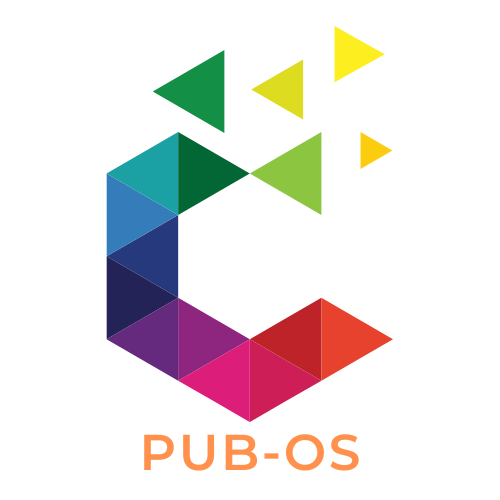In today’s fast-paced digital world, the demand for software solutions is skyrocketing. However, not everyone has the time or resources to learn traditional coding languages. That’s where no-code development comes in, offering a powerful alternative that empowers anyone to create applications without writing a single line of code.
No-code platforms are revolutionizing the way individuals and businesses approach software development. They enable users to design and launch apps quickly, making technology more accessible than ever. Whether it’s building a website, automating workflows, or creating complex databases, no-code tools provide the flexibility and efficiency needed to thrive in a competitive landscape. Embracing no-code development is not just a trend; it’s a vital skill for anyone looking to innovate and streamline their processes.
Table of Contents
ToggleUnderstanding No-Code Development
No-code development enables users to create software applications without traditional programming skills. No-code platforms provide visual interfaces, allowing individuals to drag and drop components. No-code tools streamline processes by using pre-built functions and templates, significantly reducing the time needed to launch applications.
No-code development appeals to a diverse audience, including entrepreneurs, marketers, and small business owners. No-code platforms eliminate barriers that typically hinder non-technical users from creating custom solutions. No-code options empower users to prototype ideas quickly, iterate based on feedback, and adapt to changing market demands.
No-code platforms include popular options like Bubble, Webflow, and Airtable. Each platform offers unique features, catering to different needs. Bubble focuses on web applications, Webflow excels in responsive design, and Airtable combines database functionalities with user-friendly interfaces.
No-code development enhances collaboration between technical and non-technical team members. No-code solutions allow users to validate concepts rapidly, facilitating faster decision-making. No-code tools foster an environment where creative solutions thrive, unlocking innovation across various industries.
Benefits of No-Code Development

No-code development offers key advantages, helping users streamline processes and foster innovation. The following points highlight specific benefits of this approach.
Accessibility for Non-Developers
Accessibility significantly increases as no-code platforms enable non-developers to create applications. Users don’t require programming expertise or training, allowing entrepreneurs, marketers, and small business owners to build customized solutions. Visual interfaces simplify the development process, with drag-and-drop features and pre-built templates that make it easy to bring ideas to life.
Speed of Development
Speed of development accelerates, as no-code solutions reduce launch times from weeks or months to days or even hours. Fast prototyping becomes possible, enabling users to test concepts quickly and iterate based on feedback. Rapid deployment of applications leads to swift responses to market changes, enhancing competitive advantage and driving business growth.
Popular No-Code Tools
No-code tools are transforming the way applications are built by providing accessible solutions for users with varying technical backgrounds. Below are leading platforms and a comparison of their features.
Overview of Leading Platforms
- Bubble: Bubble is a versatile platform for creating web applications. It offers a robust visual editor that allows users to design fully responsive applications without writing code. Users can access a wide range of templates and plugins to enhance functionality, making it suitable for startups and established businesses.
- Webflow: Webflow focuses on responsive web design and simplifies the process of creating visually appealing websites. The intuitive design interface allows users to drag and drop elements, ensuring designs look great on any device. Webflow also incorporates CMS features, enhancing content management capabilities for users.
- Airtable: Airtable combines the functionalities of a spreadsheet and a database. Its visual layout supports organized data management and project tracking. Users can create custom apps using templates, integrate with other tools, and automate workflows, making it ideal for teams looking for organized collaboration.
- Zapier: Zapier enables users to automate workflows by connecting various applications. Users can create “Zaps” that automate repetitive tasks between different platforms without any coding. It supports integration with thousands of apps, enhancing productivity.
Comparison of Features
| Platform | Main Features | Best For |
|---|---|---|
| Bubble | Visual application builder, templates, plugin integration | Startups, custom web apps |
| Webflow | Responsive design, CMS capabilities | Designers, marketing websites |
| Airtable | Spreadsheet-database hybrid, automation, templates | Data management, team collaboration |
| Zapier | Workflow automation, app integration | Task automation across platforms |
These no-code tools streamline development processes, foster innovation, and enable users to bring their ideas to life efficiently. Each platform serves unique needs, allowing users to select the most suitable one for their projects.
Getting Started with No-Code Development
No-code development equips users with the tools to create applications without writing any code. Following straightforward steps ensures a smooth entry into this innovative field.
Essential Steps to Begin
- Identify Goals: Define the specific application or solution to create. This clarity directs the development process and guides platform selection.
- Choose a No-Code Platform: Select a platform that matches project requirements. Consider options like Bubble for web applications, Webflow for design, Airtable for data management, or Zapier for automation.
- Explore Tutorials: Access platform-specific tutorials to familiarize oneself with features and functionality. This knowledge accelerates the development process.
- Start Building: Use drag-and-drop tools to create the application. Experiment with pre-built templates to streamline initial development and save time.
- Iterate and Test: Continuously test the application at various stages. Gathering feedback allows for improvements and adjustments, enhancing the final product.
- Launch: After rigorous testing, launch the application. Monitor its performance and gather user feedback for future enhancements.
Resources for Learning
- Online Courses: Platforms like Udemy and Coursera offer comprehensive no-code development courses covering various tools and techniques.
- YouTube Channels: Many channels provide step-by-step tutorials and project walkthroughs, making learning visual and practical.
- Community Forums: Engage with communities on platforms like Reddit or Facebook Groups. These forums offer support, knowledge sharing, and networking opportunities.
- Documentation and Blogs: Explore the official documentation of no-code tools and read blogs dedicated to no-code development for up-to-date practices and tips.
- Webinars and Workshops: Attend webinars or online workshops hosted by no-code platforms to gain insights from industry experts and learn best practices.
Embracing no-code development opens up a world of possibilities for individuals and businesses alike. By leveraging intuitive platforms, users can transform their ideas into functional applications without needing extensive coding knowledge. This democratization of technology not only accelerates the development process but also fosters creativity and collaboration among diverse teams.
As the digital landscape continues to evolve, no-code solutions will play a crucial role in driving innovation. With the right tools and resources, anyone can become a creator, turning challenges into opportunities for growth and success. Whether you’re an entrepreneur or a small business owner, diving into no-code development could be the key to staying competitive in today’s fast-paced market.













